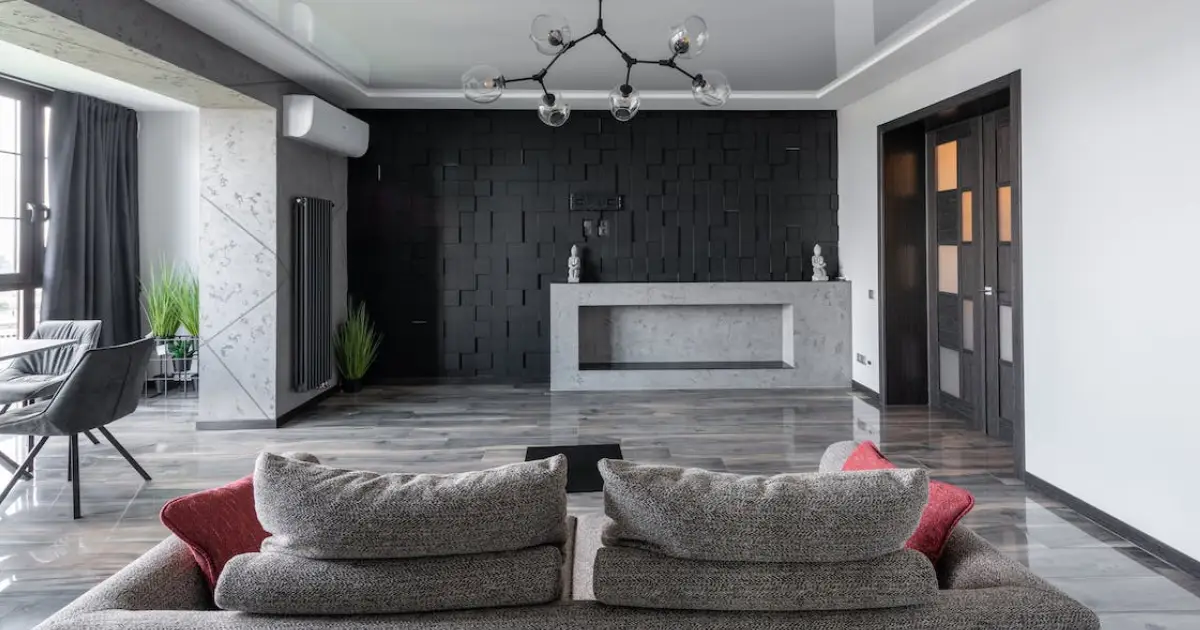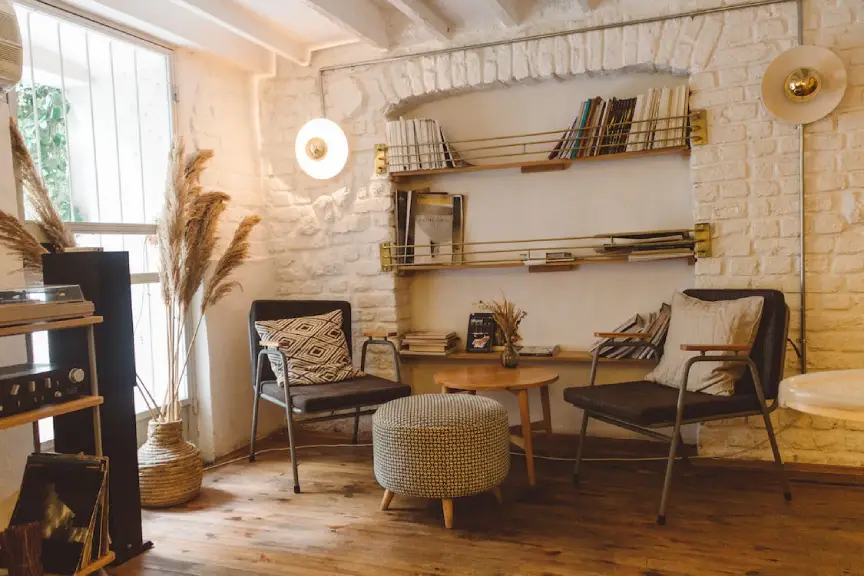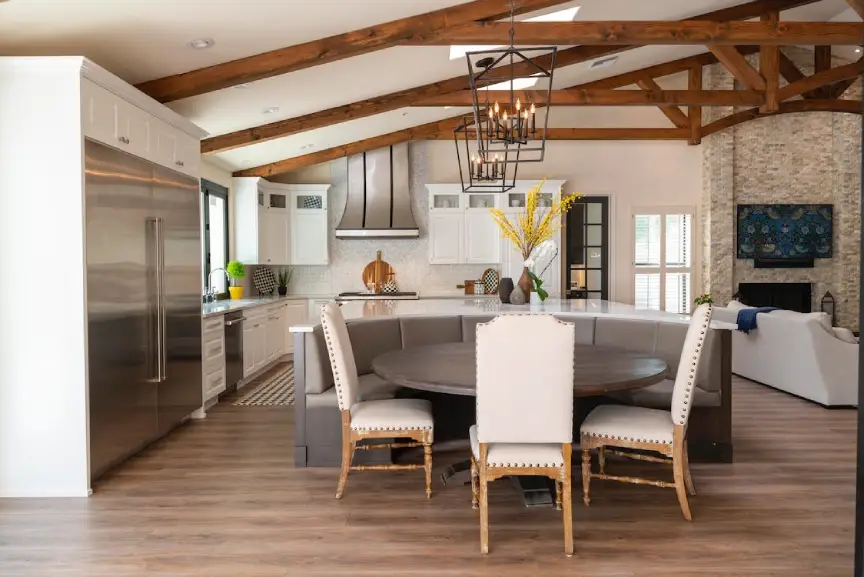


Interior lighting, in simple words, means using artificial lighting to transform or illuminate the interiors of your home. Interior lighting can be used to create a particular mood/atmosphere in your rooms. Finding the perfect lighting for your house is not an easy task.
There is no one-size-fits-all solution for each room's lighting requirements. There are three different types of lighting.
Brands are composed of various elements that contribute to their overall identity. These elements may include logos, colours, typography, imagery, and brand messaging. Analyzing these components and understanding their significance will help in translating them into the office environment effectively.
This is the general lighting that illuminates the entire space. Usually, it creates a cheery, welcoming atmosphere in a space. It creates a welcoming and warm environment. When you enter a room, it draws attention to its specific features, such as a decorative sculpture, a statement piece of furniture, or an ornate mirror.
This is lighting that is intended specifically for a certain activity, like reading, working, or cooking. Usually, it is brighter and more focused than ambient lighting. It prevents eye strain.
This type of lighting is used to draw attention to certain features or objects in space. It can be used to make a focal point or to add drama and interest.

The lighting in a room depends on its functionality. A kitchen, for example, will require different types of lighting than a bedroom. Task lighting is required in the kitchen for cooking and food preparation, as well as ambient lighting to create a comfortable atmosphere. You will need a variety of lighting options in the bedroom, such as a bedside lamp for reading and a dimmer switch to create a relaxing ambiance.
If your room gets plenty of natural light, then you don't need that many artificial light fixtures. Nothing compares to natural light for giving your space a vibrant and energizing feel. Energy consumption is just a bonus.
However, if your room lacks natural light, you must ensure that the appropriate amount of artificial light is introduced. Take advantage of windows and openings to allow natural light to flood in during the day.
The dimensions of the room have a significant impact on the type and intensity of the lighting required. To avoid dark corners in larger rooms, it is necessary to use a variety of lighting sources, such as a dramatic or statement-making light fixture. A smaller space, on the other hand, may benefit from fewer, strategically placed fixtures, such as a dim light, to create an intimate setting and, at the same time, a family dinner, without overwhelming it. The key to adaptability is to be flexible.
For higher ceilings, pendant lights or chandeliers can provide a dramatic focal point and distribute the light evenly. In rooms with lower ceilings, flush mount or semi-flush mount fixtures are practical while still adding a touch of style.
Your house reflects your personality or personal style. Lighting fixtures that are sleek and simple might be best if your decor is modern. Lighting fixtures with more details and ornamentation may be appropriate if your decor is traditional. If you have an eclectic style, you might want to mix and match light fixtures.
You have a chandelier in your kitchen. Do you think that makes sense? The same goes for your reading room; a dim light will not do. It is crucial to choose lighting fixtures that complement each room's functionality.

It is the heart of every home. You have an infinite number of options here, beginning with a show-stopping chandelier or Pendant lights that hang over your coffee tables. Always try to balance ambient, task, and accent lighting. Adding dimmers allows you to customize your room's mood.
Specific activities, such as reading, hosting dinner parties, and working, can also influence lighting choices. Position your lighting fixtures strategically to eliminate glare and shadows. Avoid placing a floor lamp directly beside a TV screen, for example, to avoid unwanted reflections. Also, make sure that table lamps are properly positioned to avoid casting shadows on people's faces when they sit on the sofa.
Now it's time to head to the kitchen For your countertops, under-cabinet lighting is a lifesaver, making sure you can see what you're chopping and dicing. Pendant lights over islands not only light up your workspace but also add a dash of style if they can be dimmed. And if your kitchen's layout is all sorts of unique, track lighting is your flexible friend, letting you adjust where the light goes.
Usually in the kitchen, the key fixture is set directly above the kitchen island. They cannot be too big or too small. Task lighting is essential for safety in the kitchen workspace. Shadows can be minimized by using linear LED lighting in the ceiling, above cabinets, or under cabinets.
A bedroom is usually associated with rest, but it is also where we pack for travel and argue over crossword puzzles, so how do we do it? Layering. Yes, bedside lamps are your go-to source of task lighting when you are reading in bed or just unwinding.
Overhead fixtures create that soft and dreamy ambiance. And for a touch of space-saving charm, wall sconces are perfect for focused light without taking up too much room. A warm or neutral white light temperature generates a calming yet practical atmosphere in the bedroom. Pendant lights and lamps best suit your dressers. Sconces if you are an avid reader.
Vanity lights are your best friends, making sure you see all the details when you're getting ready. It also counts as a decorative element. Bathrooms lacking natural light through windows often require increased or brighter vanity lighting.
Usually, relying solely on a vanity fixture may not provide ample overall lighting for the entire bathroom. Combining these fixtures with other overhead lighting options, such as recessed lighting, is more efficient. Opt for a finish that matches other fixtures at home, like chrome, brushed nickel, antique brass, or oil-rubbed bronze.
Ensure the chosen vanity fixture is explicitly designed for bathroom use to guarantee its waterproof and secure features.

The style, size, and shape of your room and dining table determine the right lighting fixtures. It has to be both practical and aesthetically pleasing to the eye. But why is that? You need to be able to host dinner parties as well as study/work from your table.
Choose warm yellow bulbs and incorporate eye-catching table lamps or curved floor lighting to craft a gentle, post-dinner radiance. According to the experts, a round dining space can be designed with an oversized round fixture.
It is wonderful to be able to adjust your lighting to suit your mood, but it is even better if doing so lowers your carbon footprint and puts more money in your pocket.
Dimmers are like volume controls for your lights. They can turn your dining space into an intimate date night setting within seconds. It sets the mood and saves energy simultaneously. How?
Do not worry, We will explain. Smart lighting takes things up a notch. With smart bulbs and switches, you can control your lights remotely through your smartphone or even with your voice. Forgot to turn off the lights before leaving the house. Not a problem anymore. Plus, you can schedule your lights to turn on or off at specific times, making it look like you're home even when you're not. Talk about energy-efficient convenience!
LED - Light-emitting diodes help you save tons of dollars. They use significantly less energy compared to traditional incandescent bulbs, which means you get the same amount of light while keeping your energy bill in check. LEDs also last much longer, so you won't be swapping out bulbs as often. Plus, they come in various shades and colors, allowing you to customize your lighting to match your style.
Yes, you read that correctly. Lights that turn on and off automatically by detecting movements. Think about it – no more "Oops, I left the lights on" moments. If you are one of those people, this will be a lifesaver.

Do you struggle to start conversations sometimes? Well, say goodbye to those awkward silences. Your lighting fixtures can now spark conversations. It can be a form of artistic expression. Just wait; it gets better. Light art's primary aspect is its capacity to alter spatial perception and encounters. Through manipulating light, color, and structure, artists craft immersive realms that transport audiences, defying reality. They utilize light to construct illusions, bring life to objects, and craft lively designs, thus reshaping how we perceive spaces. Interesting, right?
It simply means placing lights behind objects or panels to create a stunning visual effect. Imagine your TV mounted on a wall with a soft glow behind it or a decorative panel that seems to radiate light from within. It adds depth and intrigue to your room.
Yes, your potted plants and books can now steal the spotlight. These are not your typical shelves; they come with integrated lighting that illuminates your display items.
Lighting is paramount in interior design, shaping the mood and functionality of spaces. It's a transformative tool that can redefine a room's ambiance. Remember, lighting is adaptable—tweak it as your tastes evolve.